by Heather Plett | Oct 31, 2012 | Uncategorized
As soon as I began to imagine Lead with your Wild Heart, I knew that it would be a program that would bring together the wisdom of a broad circle of people. I started making a list of the authentic, vulnerable, and wild-hearted people that I admired and that I knew that people could learn from, and the list kept getting longer and longer. (To be honest, it could be three times as long, but I had to draw the line somewhere.)
When I sent out invitations to these people, almost without fail they responded with “yes, yes, YES! This is a beautiful thing and I want to be part of it!” In the end, I have gathered together an incredible wisdom circle and I am excited to share these amazing people with you.
Here’s a brief introduction to who they are and how they’ve inspired me (in no particular order). To learn more about their wild-hearted wisdom, you’ll have to register for Lead with your Wild Heart!
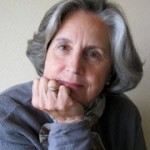 About a dozen years ago, when I was feeling rather lost in my leadership journey, I started looking for new leadership models and I came across the work of Christina Baldwin and her partner Ann Linnea. Christina and Ann’s primary work revolves around bringing circle back into the way we gather in our communities and workplaces. In that dark moment, it felt like they lit a candle for me, offering me hope of a better future. Since then, I’ve read almost everything Christina has written and I’ve had the privilege of participating in a story/circle workshop with her. I consider her to be one of my greatest teachers. I now use the PeerSpirit Circle Guidelines for almost every course, workshop, or conversation I facilitate. I highly recommend Christina and Ann’s book The Circle Way: A Leader in Every Chair.
About a dozen years ago, when I was feeling rather lost in my leadership journey, I started looking for new leadership models and I came across the work of Christina Baldwin and her partner Ann Linnea. Christina and Ann’s primary work revolves around bringing circle back into the way we gather in our communities and workplaces. In that dark moment, it felt like they lit a candle for me, offering me hope of a better future. Since then, I’ve read almost everything Christina has written and I’ve had the privilege of participating in a story/circle workshop with her. I consider her to be one of my greatest teachers. I now use the PeerSpirit Circle Guidelines for almost every course, workshop, or conversation I facilitate. I highly recommend Christina and Ann’s book The Circle Way: A Leader in Every Chair.
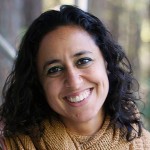 Janell Kapoor likes to play with mud. With a passion for living in close connection with the earth, she teaches natural home building and is the founder of Kleiwerks International. She has traveled around the world, both as a student and teacher of natural home building techniques. Janell has a beautiful spirit that’s quickly evident when you have a chance to chat with her. One of the things I learned about her recently is that she loves to walk barefoot in the woods, which seems like a great way to get in touch with your wild heart!
Janell Kapoor likes to play with mud. With a passion for living in close connection with the earth, she teaches natural home building and is the founder of Kleiwerks International. She has traveled around the world, both as a student and teacher of natural home building techniques. Janell has a beautiful spirit that’s quickly evident when you have a chance to chat with her. One of the things I learned about her recently is that she loves to walk barefoot in the woods, which seems like a great way to get in touch with your wild heart!
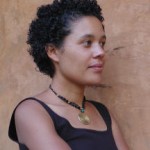 I became intrigued with Marianne Knuth’s story when I first read about it in Storycatcher (by Christina Baldwin). Not long after reading about her, I had the pleasure of meeting Marianne at ALIA, where she was one of the hosts. Marianne is the founder of Kufunda Learning Village in Zimbabwe, a place I long to visit some day. Kufunda seeks to create their own sustainable solutions in a country that has been wracked with financial crisis and conflict. Built on a unique model that encourages people to be self-reliant, community-oriented, and resilient, members of the village develop (and share) skills in permaculture, organic farming, making herbal remedies out of locally grown plants, eco-building, renewable energy, and community building.
I became intrigued with Marianne Knuth’s story when I first read about it in Storycatcher (by Christina Baldwin). Not long after reading about her, I had the pleasure of meeting Marianne at ALIA, where she was one of the hosts. Marianne is the founder of Kufunda Learning Village in Zimbabwe, a place I long to visit some day. Kufunda seeks to create their own sustainable solutions in a country that has been wracked with financial crisis and conflict. Built on a unique model that encourages people to be self-reliant, community-oriented, and resilient, members of the village develop (and share) skills in permaculture, organic farming, making herbal remedies out of locally grown plants, eco-building, renewable energy, and community building.
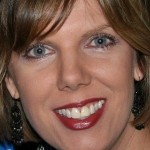 Jodi Crane found her wild heart through play. She is a play therapist, a counseling professor, and a mom who loves to be creative. I love the fact that she has a long list of credentials (including a PhD in Counseling and Student Services) that would imply that she’s a serious scholar, and yet her greatest joy and the wisdom she shares most broadly with the world is the gift of play. If anyone knows the value of bringing more play into our journeys toward our own wild hearts, she does!
Jodi Crane found her wild heart through play. She is a play therapist, a counseling professor, and a mom who loves to be creative. I love the fact that she has a long list of credentials (including a PhD in Counseling and Student Services) that would imply that she’s a serious scholar, and yet her greatest joy and the wisdom she shares most broadly with the world is the gift of play. If anyone knows the value of bringing more play into our journeys toward our own wild hearts, she does!
 The first thing that happens when you get a chance to talk to Julie Daley is that you get lost in her deep, wise, and soulful eyes. In her presence, I feel instantly safe and seen. She is an open-hearted and wise healer, catalyst, dancer, and writer. She writes beautifully at Unabashedly Female, she teaches creativity and leadership at Stanford University, and she offers coaching and courses that help guide women into their own internal landscape, a land where the sacred feminine makes herself known in Her own way.
The first thing that happens when you get a chance to talk to Julie Daley is that you get lost in her deep, wise, and soulful eyes. In her presence, I feel instantly safe and seen. She is an open-hearted and wise healer, catalyst, dancer, and writer. She writes beautifully at Unabashedly Female, she teaches creativity and leadership at Stanford University, and she offers coaching and courses that help guide women into their own internal landscape, a land where the sacred feminine makes herself known in Her own way.
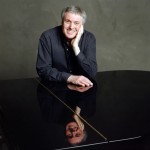 I first met Michael Jones when we were both participants in a leadership intensive at ALIA Summer Institute. He didn’t speak often in the workshop, but when he did, his words were rich with wisdom. One evening, he delivered the keynote address and played the piano. Even on stage, his words were few and measured (and interspersed with some of the most gorgeous music I’d ever heard), but WOW did they pack a punch! He spoke about the power of place, and then he demonstrated by playing music that had evolved out of certain places that were meaningful to him. The next day, I rushed to the bookstore to buy his book Artful Leadership and his cd Almost Home. I devoured his book as soon as I got home and listened to his cd non-stop for weeks. My view of leadership was transformed. More than anything, he gave me permission to believe what I had always wanted to believe, that “in a time of vast mistrust we need leaders who are candid and truthful, willing to be present to their vulnerabilities, fears, and concerns, and able to articulate them as openly and thoughtfully as their aspirations, dreams, and ideas for change.”
I first met Michael Jones when we were both participants in a leadership intensive at ALIA Summer Institute. He didn’t speak often in the workshop, but when he did, his words were rich with wisdom. One evening, he delivered the keynote address and played the piano. Even on stage, his words were few and measured (and interspersed with some of the most gorgeous music I’d ever heard), but WOW did they pack a punch! He spoke about the power of place, and then he demonstrated by playing music that had evolved out of certain places that were meaningful to him. The next day, I rushed to the bookstore to buy his book Artful Leadership and his cd Almost Home. I devoured his book as soon as I got home and listened to his cd non-stop for weeks. My view of leadership was transformed. More than anything, he gave me permission to believe what I had always wanted to believe, that “in a time of vast mistrust we need leaders who are candid and truthful, willing to be present to their vulnerabilities, fears, and concerns, and able to articulate them as openly and thoughtfully as their aspirations, dreams, and ideas for change.”
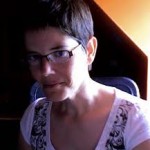 Three years ago, I encountered Christine Claire Reed online and knew almost instantly that we were kindred spirits. At the time, she was just beginning to rediscover her love of dance. Having dealt with years of rather debilitating depression, her journey in recent years has taken her to a place of healing and wild-hearted wholeness through dance. After immersing herself in various forms of yoga dance, healing dance, and elder dance, she took a courageous step and opened the Girl on Fire Movement Studio a year ago. She now teaches women to get back into their bodies to find healing and hope.
Three years ago, I encountered Christine Claire Reed online and knew almost instantly that we were kindred spirits. At the time, she was just beginning to rediscover her love of dance. Having dealt with years of rather debilitating depression, her journey in recent years has taken her to a place of healing and wild-hearted wholeness through dance. After immersing herself in various forms of yoga dance, healing dance, and elder dance, she took a courageous step and opened the Girl on Fire Movement Studio a year ago. She now teaches women to get back into their bodies to find healing and hope.
 The first thing that comes to mind when I think of Filiz Telek is the term “imaginal cell”. Like the cells in a chrysalis that hold the hope of the future, she senses the beauty of the butterfly world emerging. She has spent the last couple of years living in the gift economy and traveling to places where she sees the Brave New World emerging. Her role in life is to serve as a storyteller, filmmaker, and edgewalker, showing us glimpses into the future that help propel us forward with hope. I don’t think I could improve upon the way she describes herself: “Wild at heart, free in Spirit, curious in mind, I am a nomadic artist, world traveler, spiritual seeker, a process host, a social innovator, an Earth activist, a community organizer whose purpose is to serve the evolution of human consciousness and awakening a sense of possibility and sacred in human heart & spirit.”
The first thing that comes to mind when I think of Filiz Telek is the term “imaginal cell”. Like the cells in a chrysalis that hold the hope of the future, she senses the beauty of the butterfly world emerging. She has spent the last couple of years living in the gift economy and traveling to places where she sees the Brave New World emerging. Her role in life is to serve as a storyteller, filmmaker, and edgewalker, showing us glimpses into the future that help propel us forward with hope. I don’t think I could improve upon the way she describes herself: “Wild at heart, free in Spirit, curious in mind, I am a nomadic artist, world traveler, spiritual seeker, a process host, a social innovator, an Earth activist, a community organizer whose purpose is to serve the evolution of human consciousness and awakening a sense of possibility and sacred in human heart & spirit.”
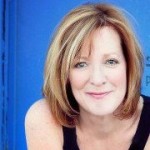 I was intrigued with Ronna Detrick from the first time I discovered her blog. She specializes in seeing the wisdom stories about women in the Bible through fresh (and often controversial) eyes. It was this freshness that really resonated for me, and I kept going back for more. Since then I have had the privilege of having many Skype conversations with Ronna and have benefited from her wisdom, her doubt, her questions, and her big open heart. She is a truth-teller who boldly takes the women she teaches and coaches into deeper understanding of themselves and their faith.
I was intrigued with Ronna Detrick from the first time I discovered her blog. She specializes in seeing the wisdom stories about women in the Bible through fresh (and often controversial) eyes. It was this freshness that really resonated for me, and I kept going back for more. Since then I have had the privilege of having many Skype conversations with Ronna and have benefited from her wisdom, her doubt, her questions, and her big open heart. She is a truth-teller who boldly takes the women she teaches and coaches into deeper understanding of themselves and their faith.
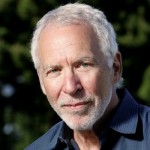 The first time I heard Peter Block speak at ALIA in Columbus, Ohio, I spent most of the time scribbling in my notebook because I didn’t want to forget even one tiny bit of the wisdom that flowed from his mouth. His words resonated in such a deep way that I felt like I had come home. One of the first things I remember him saying was “when we gather like this, with you sitting in rows of chairs and me standing at the front teaching you, we are accepting the patriarchal view of the world, where one has the power and wisdom and the others have to sit in subservient positions receiving it.” He went on to talk about how badly we need to move back into community, based on feminine wisdom and the shared leadership of a circle. After his talk, I approached him and said “as a woman who deeply believes what you’re talking about, I would love it if you would write a book about the rise of feminine wisdom. You have a lot of influence and I think more people need to hear about this.” He laughed and said “that’s not my job. It’s yours. You write the book and I’ll support you.” Well, I haven’t written the book, but in teaching this course, I’m taking a step in that direction, and I’m pleased to say that he’s living up to his commitment to supporting me. Peter is the author of several books, including Community, The Abundant Community, The Answer to How is Yes, and Stewardship.
The first time I heard Peter Block speak at ALIA in Columbus, Ohio, I spent most of the time scribbling in my notebook because I didn’t want to forget even one tiny bit of the wisdom that flowed from his mouth. His words resonated in such a deep way that I felt like I had come home. One of the first things I remember him saying was “when we gather like this, with you sitting in rows of chairs and me standing at the front teaching you, we are accepting the patriarchal view of the world, where one has the power and wisdom and the others have to sit in subservient positions receiving it.” He went on to talk about how badly we need to move back into community, based on feminine wisdom and the shared leadership of a circle. After his talk, I approached him and said “as a woman who deeply believes what you’re talking about, I would love it if you would write a book about the rise of feminine wisdom. You have a lot of influence and I think more people need to hear about this.” He laughed and said “that’s not my job. It’s yours. You write the book and I’ll support you.” Well, I haven’t written the book, but in teaching this course, I’m taking a step in that direction, and I’m pleased to say that he’s living up to his commitment to supporting me. Peter is the author of several books, including Community, The Abundant Community, The Answer to How is Yes, and Stewardship.
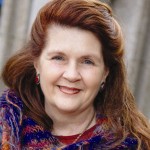 Some day I want to meet Gail Larsen to learn from her and to thank her for the wisdom she has shared with the world. I have been aware of her teachings for awhile, but really immersed myself in them last year when I listened to an audio version of her book Transformational Speaking on a long drive across the prairies. Transformational Speaking is a process that reveals the part of you that is fully capable – right now – of opening hearts, inspiring change, and moving others to act through public speaking. It’s about finding your “original medicine” and speaking from your wild heart. I’m exited about my first (and hopefully not my last) opportunity to speak with Gail!
Some day I want to meet Gail Larsen to learn from her and to thank her for the wisdom she has shared with the world. I have been aware of her teachings for awhile, but really immersed myself in them last year when I listened to an audio version of her book Transformational Speaking on a long drive across the prairies. Transformational Speaking is a process that reveals the part of you that is fully capable – right now – of opening hearts, inspiring change, and moving others to act through public speaking. It’s about finding your “original medicine” and speaking from your wild heart. I’m exited about my first (and hopefully not my last) opportunity to speak with Gail!
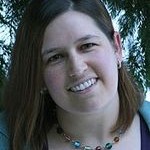 I think the first thing that created a bond between Lianne Raymond and me were our stories of similar childhoods growing up in the prairies. It didn’t take long to discover that the things we had in common went much deeper than that. Lianne is a gifted teacher and coach, and I think that her greatest gift is her ability to reach right to the heart of a matter before most people have even begun to scratch the surface. She serves as my wisdom-source whenever I have questions about Jungian psychology or Marion Woodman teachings. Through her coaching and teaching, she helps people to live and love with wild abandon.
I think the first thing that created a bond between Lianne Raymond and me were our stories of similar childhoods growing up in the prairies. It didn’t take long to discover that the things we had in common went much deeper than that. Lianne is a gifted teacher and coach, and I think that her greatest gift is her ability to reach right to the heart of a matter before most people have even begun to scratch the surface. She serves as my wisdom-source whenever I have questions about Jungian psychology or Marion Woodman teachings. Through her coaching and teaching, she helps people to live and love with wild abandon.
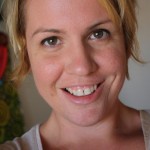 Soon after Connie Hozvicka and I met online, we began to discover remarkable synchronicity. We would often find ourselves going through similar experiences or having the same thought processes in reaction to what we witnessed. At the beginning of our friendship, Connie and I were both stuck in jobs that no longer made us happy. Within months of each other, we each took bold and scary steps into self-employment. Connie now runs Dirty Footprints Studio where she awakens fearless creativity in others, inspires each soul to radiate their heart’s unique expression, and guides individuals to ruthlessly trust their innate wisdom. I’ve had the pleasure of participating in one of Connie’s live workshops, and I can tell you that she teaches with a wild-hearted passion and authenticity.
Soon after Connie Hozvicka and I met online, we began to discover remarkable synchronicity. We would often find ourselves going through similar experiences or having the same thought processes in reaction to what we witnessed. At the beginning of our friendship, Connie and I were both stuck in jobs that no longer made us happy. Within months of each other, we each took bold and scary steps into self-employment. Connie now runs Dirty Footprints Studio where she awakens fearless creativity in others, inspires each soul to radiate their heart’s unique expression, and guides individuals to ruthlessly trust their innate wisdom. I’ve had the pleasure of participating in one of Connie’s live workshops, and I can tell you that she teaches with a wild-hearted passion and authenticity.
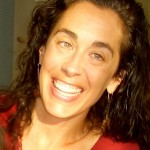 I first encountered Deborah Frieze when I read the book she co-wrote with Meg Wheatley called Walk Out Walk On. Not long afterward, I had the pleasure of participating in a leadership intensive workshop that Deborah was teaching at ALIA. The workshop was based on five of the stories that are shared in the book, of communities from around the world that have walked out of unsolveable problems and destructive individualism and walked on to create the world they wished for. It was one of the most inspirational workshops I’d even attended, and I now refer to the book often in my own teaching. Deborah walked out of her own career as an executive in the high-tech industry, following her wild heart into work that sustained and energized her, supporting friends and colleagues around the world who are creating healthy and resilient communities.
I first encountered Deborah Frieze when I read the book she co-wrote with Meg Wheatley called Walk Out Walk On. Not long afterward, I had the pleasure of participating in a leadership intensive workshop that Deborah was teaching at ALIA. The workshop was based on five of the stories that are shared in the book, of communities from around the world that have walked out of unsolveable problems and destructive individualism and walked on to create the world they wished for. It was one of the most inspirational workshops I’d even attended, and I now refer to the book often in my own teaching. Deborah walked out of her own career as an executive in the high-tech industry, following her wild heart into work that sustained and energized her, supporting friends and colleagues around the world who are creating healthy and resilient communities.
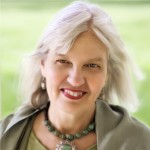 Chris Zydel is the Wild Heart Queen herself and I am tickled pink that she will be part of this program. Few people model wild-hearted living as much as Chris does, and I am delighted to have her as a friend and mentor. For more than thirty years, she’s been serving as a creativity mentor for women (and a few men), first as a psychotherapist, and now as a teacher (and writer) of Creative Juices Arts. Though I haven’t yet been to one of her retreats, I can tell by the photos and videos that they are juicy, deep, soulful, and wild-hearted. At her retreats (and teacher training) she teaches people to paint from their wild hearts in an environment of encouragement that awakens their artist’s souls and challenges them to become spiritual adventurers journeying to their own creative source.
Chris Zydel is the Wild Heart Queen herself and I am tickled pink that she will be part of this program. Few people model wild-hearted living as much as Chris does, and I am delighted to have her as a friend and mentor. For more than thirty years, she’s been serving as a creativity mentor for women (and a few men), first as a psychotherapist, and now as a teacher (and writer) of Creative Juices Arts. Though I haven’t yet been to one of her retreats, I can tell by the photos and videos that they are juicy, deep, soulful, and wild-hearted. At her retreats (and teacher training) she teaches people to paint from their wild hearts in an environment of encouragement that awakens their artist’s souls and challenges them to become spiritual adventurers journeying to their own creative source.
 It wasn’t long after Desiree Adaway and I met on Twitter that we started to joke that we’d been separated at birth. (Don’t let the colour of our skin fool you!) In many ways, we could be twins – she just came out of the womb a few months earlier than me. We have similar world views, we’re both raising daughters, we’re both passionate about social justice, we both spent many years of our careers in leadership in international development, and we’ve both been to some of the poorest parts of the world. From the start, when we were both on the verge of walking away from the non-profits we were working for, Desiree and I have served as a mutual support system for each other – sometimes she does the crying and sometimes I do. Though we’re similar, we also balance each other off. When I get a little lost in my untamed creativity, she keeps my feet on the ground. When she overworks herself or gets stuck in left brain patterns, I send her to the store for coloured markers and tell her to start playing. Desiree serves as a consultant and coach to organizations that are dreaming of a better world. She’s fierce, bold, wild-hearted, and full of wisdom.
It wasn’t long after Desiree Adaway and I met on Twitter that we started to joke that we’d been separated at birth. (Don’t let the colour of our skin fool you!) In many ways, we could be twins – she just came out of the womb a few months earlier than me. We have similar world views, we’re both raising daughters, we’re both passionate about social justice, we both spent many years of our careers in leadership in international development, and we’ve both been to some of the poorest parts of the world. From the start, when we were both on the verge of walking away from the non-profits we were working for, Desiree and I have served as a mutual support system for each other – sometimes she does the crying and sometimes I do. Though we’re similar, we also balance each other off. When I get a little lost in my untamed creativity, she keeps my feet on the ground. When she overworks herself or gets stuck in left brain patterns, I send her to the store for coloured markers and tell her to start playing. Desiree serves as a consultant and coach to organizations that are dreaming of a better world. She’s fierce, bold, wild-hearted, and full of wisdom.
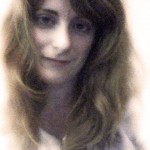 The first thing that drew me to Hali Karla was her prayer paintings. In one of the first posts I saw, she was inviting people to send her prayers which she then printed and embedded into a painting. I was struck by this beautiful offering for the way it took prayer to a creative and community-oriented place. Since then, Hali invited me to share my story in her series about artist healers. I love the wild-hearted way Hali describes herself: paint-slinging word-wrangling artist, dreamer, visionary, life-loving learner, seer, seeker, wise woman in training, explorer, nature’s child, light and vessel, believer, taste-tester, shape-shifter, sundancing moonspirit Source devotee, play-in-progress, music-maker, booty-shaker, space holder, environmental sponge, witness to Healing, cheerleader for consciousness expansion, just another Being looking for a little peace of mind, and ultimately just an Acolyte to the Muse…
The first thing that drew me to Hali Karla was her prayer paintings. In one of the first posts I saw, she was inviting people to send her prayers which she then printed and embedded into a painting. I was struck by this beautiful offering for the way it took prayer to a creative and community-oriented place. Since then, Hali invited me to share my story in her series about artist healers. I love the wild-hearted way Hali describes herself: paint-slinging word-wrangling artist, dreamer, visionary, life-loving learner, seer, seeker, wise woman in training, explorer, nature’s child, light and vessel, believer, taste-tester, shape-shifter, sundancing moonspirit Source devotee, play-in-progress, music-maker, booty-shaker, space holder, environmental sponge, witness to Healing, cheerleader for consciousness expansion, just another Being looking for a little peace of mind, and ultimately just an Acolyte to the Muse…
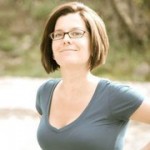 Cath Duncan has a deep and wise heart and I knew I had found a place of safety with her from the first time I encountered her. What first bonded Cath and I was our shared stories of baby-loss. When she lost little Juggernaut, I shared with her my own story of losing Matthew and then discovering, in the 12 years since, how much he still has to teach me. When Cath decided to honour Juggernaut by walking 100 kilometres for the Kidney March, I knew I wanted to walk with her. Together we went through three days of excruciating pain and exhaustion, and that created a bond between us that has grown since. Cath now serves as a grief coach and has co-created a Creative Grief Coaching certification program for people who want to explore the emerging field of grief and creativity.
Cath Duncan has a deep and wise heart and I knew I had found a place of safety with her from the first time I encountered her. What first bonded Cath and I was our shared stories of baby-loss. When she lost little Juggernaut, I shared with her my own story of losing Matthew and then discovering, in the 12 years since, how much he still has to teach me. When Cath decided to honour Juggernaut by walking 100 kilometres for the Kidney March, I knew I wanted to walk with her. Together we went through three days of excruciating pain and exhaustion, and that created a bond between us that has grown since. Cath now serves as a grief coach and has co-created a Creative Grief Coaching certification program for people who want to explore the emerging field of grief and creativity.
 Thomas Arthur is one of the most unique and intuitive people I’ve ever met. He is part juggler, part artist, part shaman, part poet, and part naturalist. I first encountered him at ALIA where he presented a performance that was a combination of juggling, dancing, and earth-wisdom-sharing. Thomas is the enchanted host of Earthanima where he invites people to listen to the wisdom the animate energies living within our planetary nature. Through performance, short films, digital images, conversations and workshops Earthanima unfolds an expression of wonder and delight integrating the natural wisdom of this living planet with the compassionate heart of our human intelligence. I often use the Elementals, a set of imaginative creatures Thomas has found in nature, to inspire the writers of my Creative Writing for Self-Discovery class.
Thomas Arthur is one of the most unique and intuitive people I’ve ever met. He is part juggler, part artist, part shaman, part poet, and part naturalist. I first encountered him at ALIA where he presented a performance that was a combination of juggling, dancing, and earth-wisdom-sharing. Thomas is the enchanted host of Earthanima where he invites people to listen to the wisdom the animate energies living within our planetary nature. Through performance, short films, digital images, conversations and workshops Earthanima unfolds an expression of wonder and delight integrating the natural wisdom of this living planet with the compassionate heart of our human intelligence. I often use the Elementals, a set of imaginative creatures Thomas has found in nature, to inspire the writers of my Creative Writing for Self-Discovery class.
 Michele Lisenbury Christensen has started a Hot Love Revolution. It doesn’t take long after you encounter her that you know she knows a lot about love. Love shines out of her eyes. She says she’s on a mission to help happy, well-loved women save the world. Sounds pretty wild-hearted to me! The core of her coaching work is what she calls “sacred ambition” – the way our aims in the world can stoke the fires of our spiritual development – and vice versa. My first encounter with Michele was when I took part in the first offering of Teach Now, an online course she teaches along with Jen Louden. It was one of the best courses I’ve ever taken and it changed the way I teach.
Michele Lisenbury Christensen has started a Hot Love Revolution. It doesn’t take long after you encounter her that you know she knows a lot about love. Love shines out of her eyes. She says she’s on a mission to help happy, well-loved women save the world. Sounds pretty wild-hearted to me! The core of her coaching work is what she calls “sacred ambition” – the way our aims in the world can stoke the fires of our spiritual development – and vice versa. My first encounter with Michele was when I took part in the first offering of Teach Now, an online course she teaches along with Jen Louden. It was one of the best courses I’ve ever taken and it changed the way I teach.
 The first thing that comes to mind when I think of Hiro Boga is the word kindness. She exudes it. Every encounter I’ve ever had with her has been one of genuine, openhearted kindness. She believes that each and every one of us is a sacred gift and that our presence is vital to the wellbeing and evolution of our world. She works with passionate people who are working to create the lives and businesses they truly desire. All of her work is anchored in a very simple, grounded premise: organic business growth flows from deep inner growth and harmony.
The first thing that comes to mind when I think of Hiro Boga is the word kindness. She exudes it. Every encounter I’ve ever had with her has been one of genuine, openhearted kindness. She believes that each and every one of us is a sacred gift and that our presence is vital to the wellbeing and evolution of our world. She works with passionate people who are working to create the lives and businesses they truly desire. All of her work is anchored in a very simple, grounded premise: organic business growth flows from deep inner growth and harmony.
 I can’t remember when I first encountered Lisa Wilson online, but I believe it was her beautiful, gracious smile that drew me in. The story I read on her face was one of depth and wisdom. Though there’s a lightness and sense of fun about her, she has been through great pain and struggle and so she serves as a light-bearer. Lisa is passionate about passionate living. She is an awareness artist who wants to encourage people to create wildly, to pursue their passions with fervent focus, and to mindfully go where they have not gone before (but she doesn’t want them to forget about the dirty dishes). Through Lifeunity, she offers insights and invitations of how to practice being mindful, compassionate, and present for your mundane matters.
I can’t remember when I first encountered Lisa Wilson online, but I believe it was her beautiful, gracious smile that drew me in. The story I read on her face was one of depth and wisdom. Though there’s a lightness and sense of fun about her, she has been through great pain and struggle and so she serves as a light-bearer. Lisa is passionate about passionate living. She is an awareness artist who wants to encourage people to create wildly, to pursue their passions with fervent focus, and to mindfully go where they have not gone before (but she doesn’t want them to forget about the dirty dishes). Through Lifeunity, she offers insights and invitations of how to practice being mindful, compassionate, and present for your mundane matters.
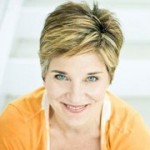 Jen Louden is exuberant, generous, and wild-hearted. She’s got a long list of accomplishments (including six published books that sold in the millions, and an appearance on Oprah), and yet she is one of the most approachable people I know. I’ve had the pleasure of chatting with her several times, and I’ve learned a lot from her, especially through Teach Now, an online program for teachers who want to “love the world into wholeness”. Her books are all about how to create a life of wholeness, based on self-kindness and self-acceptance. She leads retreats, coaches, and encourages women to Savor and Serve.
Jen Louden is exuberant, generous, and wild-hearted. She’s got a long list of accomplishments (including six published books that sold in the millions, and an appearance on Oprah), and yet she is one of the most approachable people I know. I’ve had the pleasure of chatting with her several times, and I’ve learned a lot from her, especially through Teach Now, an online program for teachers who want to “love the world into wholeness”. Her books are all about how to create a life of wholeness, based on self-kindness and self-acceptance. She leads retreats, coaches, and encourages women to Savor and Serve.
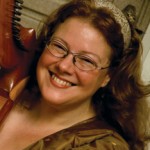 I fell in love with Ann-Marie Boudreau this past summer at the women’s gathering that I co-hosted in Peterborough, Ontario. The first things you notice about Ann-Marie are her twinkling eyes and her beautiful, resonant voice. At the gathering, Ann-Marie led us in all kinds of playful music-making and movement, and each time she did, she’d pull out another intriguing instrument none of us had ever seen before. Ann-Marie is a sound practitioner and psychotherapist. Her mission is working with communities and individuals to enable them on their personal journeys toward self-realization and fulfillment. As a multi-instrumentalist and improvisational vocalist she is adept at performing on a wide range of instruments, the sitar and harp being unique to her repertoire. She facilitates a wide variety of sound-related, interactive and experiential workshops that invite the inner child out to play.
I fell in love with Ann-Marie Boudreau this past summer at the women’s gathering that I co-hosted in Peterborough, Ontario. The first things you notice about Ann-Marie are her twinkling eyes and her beautiful, resonant voice. At the gathering, Ann-Marie led us in all kinds of playful music-making and movement, and each time she did, she’d pull out another intriguing instrument none of us had ever seen before. Ann-Marie is a sound practitioner and psychotherapist. Her mission is working with communities and individuals to enable them on their personal journeys toward self-realization and fulfillment. As a multi-instrumentalist and improvisational vocalist she is adept at performing on a wide range of instruments, the sitar and harp being unique to her repertoire. She facilitates a wide variety of sound-related, interactive and experiential workshops that invite the inner child out to play.
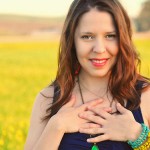 The first thing that intrigued me about Kate Swoboda was the fact that she refers to herself as Kate Courageous online. I am found of courageous women, and so I was pretty sure I’d like her. I was right. Kate runs a site called Your Courageous Life. Practicing courage is her expertise. Teaching others how to powerfully work with fear is her vocation. She stands for righteous integrity and ferocious love, all in service to living life on your own terms and being a force for good. She doesn’t believe in “kicking fear to the curb” and speaks instead about embracing our fear and stepping forward in courage.
The first thing that intrigued me about Kate Swoboda was the fact that she refers to herself as Kate Courageous online. I am found of courageous women, and so I was pretty sure I’d like her. I was right. Kate runs a site called Your Courageous Life. Practicing courage is her expertise. Teaching others how to powerfully work with fear is her vocation. She stands for righteous integrity and ferocious love, all in service to living life on your own terms and being a force for good. She doesn’t believe in “kicking fear to the curb” and speaks instead about embracing our fear and stepping forward in courage.
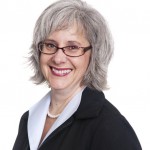 Two and a half years ago, Kathy Jourdain and I learned how to be Shambala warriors together in a leadership intensive taught by Meg Wheatley, Jim Gimian, and Jerry Granelli. We faced our fears and by the end of the weak we’d formed a blues band together and each person in the group had written a blues song. Since then, I’ve had the pleasure of serving as a story coach for her as she wrote her memoir about the shifting shape in her life after she found out her identity was not what she’d always believed it to be. I’ve witnessed Kathy’s amazing growth in the past few years as she’s followed her wild heart into writing, teaching, and hosting conversations. She is actively involved in the Art of Hosting community and she travels the world teaching people how to host meaningful conversations. Kathy’s passion is co-creative, collaborative leadership born out of what more is possible in teams, organizations and communities when people are also engaged in self leadership journeys.
Two and a half years ago, Kathy Jourdain and I learned how to be Shambala warriors together in a leadership intensive taught by Meg Wheatley, Jim Gimian, and Jerry Granelli. We faced our fears and by the end of the weak we’d formed a blues band together and each person in the group had written a blues song. Since then, I’ve had the pleasure of serving as a story coach for her as she wrote her memoir about the shifting shape in her life after she found out her identity was not what she’d always believed it to be. I’ve witnessed Kathy’s amazing growth in the past few years as she’s followed her wild heart into writing, teaching, and hosting conversations. She is actively involved in the Art of Hosting community and she travels the world teaching people how to host meaningful conversations. Kathy’s passion is co-creative, collaborative leadership born out of what more is possible in teams, organizations and communities when people are also engaged in self leadership journeys.
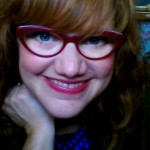 I think Rachelle Mee-Chapman’s blog was one of the first ones I read on a regular basis. She wrote candidly about her own personal journey toward the kind of spirituality and community that her heart most longed for, and I found myself drawn in to this story. Since those early days of blogging, she went on to launch Magpie Girl, where she serves as a guide for people who are searching for their right-fit spirituality and who value art as a spiritual practice. After getting a master’s degree in theology and spending fifteen years as an ordained minister, she said goodbye to ordained ministry. She now calls herself “relig-ish” and teaches that we each can create our own theology and build a spirituality that fits. She is a misfit, a heretic, a rabble-rouser, AND a person of faith.
I think Rachelle Mee-Chapman’s blog was one of the first ones I read on a regular basis. She wrote candidly about her own personal journey toward the kind of spirituality and community that her heart most longed for, and I found myself drawn in to this story. Since those early days of blogging, she went on to launch Magpie Girl, where she serves as a guide for people who are searching for their right-fit spirituality and who value art as a spiritual practice. After getting a master’s degree in theology and spending fifteen years as an ordained minister, she said goodbye to ordained ministry. She now calls herself “relig-ish” and teaches that we each can create our own theology and build a spirituality that fits. She is a misfit, a heretic, a rabble-rouser, AND a person of faith.
Spend time with this amazing wisdom circle by registering for Lead with your Wild Heart.
by Heather Plett | Oct 29, 2012 | Compassion, women
Twenty-five years ago, a man climbed through my apartment window and raped me in my bed. When I fought back, he wrapped his angry fingers around my throat, shoved my head between the wall and the bed and tried to choke me to death.
When he finally left my apartment, I ran down the street to my friends’ apartment. While I sat on their couch telling them what had happened, Terence sat on the floor at my feet and cried. He took me to the hospital and stayed there until the doctor had examined me and the police had asked me a hundred questions. Later that day, my brother Dwight came and spent the day with me. Tears appeared in his eyes too.
The next day I went home to the farm and told my parents what had happened. My stoic, pacifist father had to leave the room for awhile to collect his emotions, and when he returned, he admitted that he finally understood the man who’d spent several years of his life hunting down his daughter’s rapist.
Many women showed compassion to me as well, and they are important, but, in retrospect, I believe it was a game-changer for me that men were in my corner along with the women. The fact that all of my family and friends – women AND men – cared about what happened meant that it was a crime against humanity rather than just a crime against women.
From the start, I was able to speak freely of my rape experience, without having to hide behind shame, and that’s largely due to the way that my friends and family supported me. Some people were surprised at how candid I was, expecting me to keep it a secret, but I kept saying “Why wouldn’t I talk about it? A crime was done to me. I did nothing wrong and it doesn’t need to be a secret.”
Sadly, most of the one billion women who experience rape in their lifetime are not able to speak of it. Instead they are taught (by both men and women) that it is something to be ashamed of, that they brought it on themselves, or that it’s cultural taboo to admit that it happened.
We need to talk about rape, and we need men to care about it along with the women. To make real change, rape needs to be seen as a crime against humanity. Anything less than that, and it can be dismissed as a “women’s issue”. If rape is only a women’s issue, than any violence or oppression of women is equally unimportant, and suddenly we have allowed half of the world’s population to be silenced.
Recently, there have been reports of American politicians making unconscionable comments about rape, first about a woman’s body being able to “shut that whole thing down” to prevent pregnancy from a “legitimate rape”, and then a comment that perhaps a pregnancy from a rape was because “God intended it to happen”. According to Nicholas Kristoff’s recent column, these comments only scratch the surface of the real problems related to rape. What’s underneath is a lot of evidence that rape is not taken seriously by the authorities meant to protect American citizens. In many states, the rape kits collected after women are assaulted collect dust on a shelf and are never tested, and in some places, the women who’ve been raped have to pay for the testing to be done.
In a so-called “developed country” it is an abomination that sexual assault is not taken as seriously as other crimes. Violence against half of a country’s population is being overlooked on a regular basis. It’s even worse in other parts of the world where women are often sent away from home after a rape, or forced to marry their rapist.
Violence against women is a serious enough issue on its own, but, sadly, it is only a symptom of a much larger disease that has infected our world and we must take it very, very seriously. It’s a disease I dare to call patriarchy. Patriarchy is an unbalanced system that allows those in power to exploit and violate those who have less power.
If we, as a culture, are willing to overlook rape, then we are saying, in essence, that it is okay to use violence to overpower other people and/or the earth. If we ignore the rape of women, we also ignore the rape of our oilsands, the destruction of our oceans, the plundering of other countries, and the exploitation of the poor.
Power is a destructive force if it is allowed to run rampant without being balanced with love. As Adam Kahane says in his book Power and Love, the two are like the legs we walk on – each one holds the balance for a second and then shifts to the other. It’s the only way we can move forward in a balanced way.
Men (and women) the world over need to start paying more attention to rape because our world depends on it. It cannot remain a shameful issue that women are only allowed to whisper about in the company of other women. Until it has been brought to the forefront of our politics, the world will continue to be out of balance and we will continue to put power ahead of love.
Every woman in the world needs to be surrounded with the kind of compassionate men that I was surrounded with. Only when men and women work together to end rape and to stop the power-imbalance of patriarchy will the world come into balance.
p.s. On February 14, 2013, I’ll be rising with One Billion Rising. Won’t you join me? Women AND men?
by Heather Plett | Oct 26, 2012 | circle, Community, Compassion, Creativity, growth, journey, Leadership, Passion, Sophia
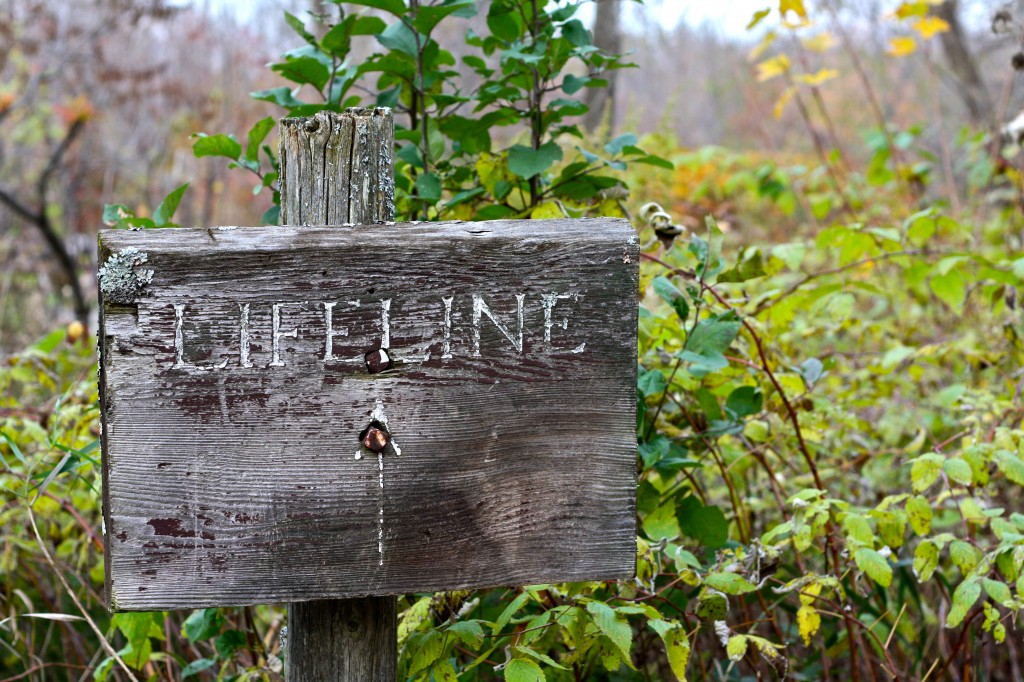 Ten years ago I was lost. I had just returned to work after my fourth and final maternity leave, and I was completely miserable. Not only was it hard to leave my baby every day, but I was in a job that didn’t sustain or inspire me. All it did was drain my energy every single day. In those days, it wasn’t unusual for tears to flow on the way home from work.
Ten years ago I was lost. I had just returned to work after my fourth and final maternity leave, and I was completely miserable. Not only was it hard to leave my baby every day, but I was in a job that didn’t sustain or inspire me. All it did was drain my energy every single day. In those days, it wasn’t unusual for tears to flow on the way home from work.
Five years earlier, I’d taken my first leadership job in the government and I took to it like a duck to water. I loved the challenge and I loved my team. I was inspired and energized by the opportunity to provide them guidance and unleash their creative potential. I had an eager and talented young staff and we worked together beautifully, finding creative ways to communicate and commemorate the sacrifices our veterans had made.
At the start, it was good, but then things started to go wrong. For one thing, I started to internalize some of the messaging I was hearing at leadership workshops and from leadership mentors. “Keep your feelings out of leadership.” “It’s about control and moderation, not about passion.” “Don’t let them see you vulnerable.” “Use your head and ignore your heart.”
For another thing, I stepped away from that first job to take one that offered higher pay and more security. Unfortunately, it was all wrong for me and the environment was toxic. It was a science environment where most of the leaders were in their roles because of their knowledge of science rather than their leadership abilities or their understanding of people. As a professional communicator, I was usually the only one at the management team table who didn’t have an advanced science degree. In an environment that valued left-brain logical thinking, there was little space for my right-brain, intuitive, heart-based approach to leadership.
I felt lost – like a foreigner in a foreign land. If this was what leadership entailed, I wasn’t sure I wanted to be a leader anymore.
And then one day, I started to explore a new way of looking at leadership (that was much closer to the way I’d intuitively lead when I’d first started) and it felt like someone had offered me a lifeline. I can’t remember whose work I discovered first, but three writers started to show up on my radar screen – Christina Baldwin, David Irvine, and Margaret Wheatley. All three wrote about authentic, community-based, vulnerable leadership. They inspired me to lead from a place in the circle, live simply in a complex world, and turn to one another. (I am deeply grateful that in the years since then, I’ve had the opportunity to attend workshops with all three of these incredible teachers.)
Not long after that, I left the government for non-profit. It was a job I loved, but it was also one that challenged me in more ways than I’d ever been challenged before. Every leadership ability that I thought I’d gained and every principle I thought I valued was put to the test. I led a national team that was mostly full of fiercely independent people who didn’t really want to be lead. I was emotionally abused, I had a lawsuit filed against me by someone who felt she was wrongfully dismissed, I witnessed more than one emotional breakdown among my staff, and I had to deal with multiple conflicts and miscommunications between staff. It was a good place to work, but it was hard and I often felt very much alone. I was floundering and there was nobody to talk to about it. I searched for a circle of other leaders who might serve as my support system, but I found none. The best I could do was have regular coffee dates with my friend Susan who understood my challenges and was always a good listening ear.
When I finally left that job to become self-employed, I knew that one of the things I wanted to do was to serve women like me who knew they had a calling to be in leadership in some form or another (whether at the boardroom table or the kitchen table) and needed someone to support and guide them. I tried to do that from the beginning, and I briefly offered a program called “How to Lead with Your Paint Clothes On”, but there was something holding me back that I had to work through first.
The truth is, there were some failure stories that were getting in the way of my calling to support other emerging leaders. There was the story of my last year at the non-profit, when I was so burnt out that I was mostly ineffectual as a leader. There was the story of the ugliness of the lawsuit (that was never resolved, by the way), and the difficulties surrounding that relationship. There was the story of the pseudo-coach who’d blasted me for my unprofessionalism when I responded emotionally to a staff member’s suicide threat. There was the story of the many attempts I’d made to build a unified team out of independently-working people spread across the country.
Every time I’d think about offering a leadership program for women emerging into leadership, I’d get blocked by the gremlins that told me “you failed at leadership – what gives you the audacity to think you could teach people?”
And yet, the memory of the lifeline I’d been offered in my most lost place kept propelling me forward. I knew that the woman I was ten years ago desperately needed women like me to serve as her guide – women who’d been through the challenges, admitted her failures, had a few glorious moments, and learned from her mistakes. I knew that she needed someone who would encourage her without judging her. I knew she needed to be given permission to lead with her heart and not just her head. I knew – more than anything – that she needed someone to say “You’re okay. You’re enough. You’re on the right path. Don’t give up.”
This summer, I had the privilege of co-hosting a beautiful circle of 44 women at the annual Gather the Women gathering, and I walked away inspired once again by the need this world has for more women to gather in circle and offer their hearts into the service of transformation. After asking the women to share stories of courage, I knew that the most courageous thing I could do would be to more boldly and confidently step into the role of guide for women emerging into leadership.
Finally, after two years of self-employment, I am ready to offer the thing that’s been tugging at my heart for years – a personal leadership program for women emerging as changemakers, artists, visionaries, storytellers, and edgewalkers.
It’s called Lead with your Wild Heart, and it comes directly from my wild heart to yours.
First and foremost, it’s about redefining leadership. I believe what Margaret Wheatley says, that “a leader is anyone who is willing to help, anyone who sees something that needs to change and takes the first step to influence that situation.”
This program is for you if you’re imagining a better future for yourself, your community, or the world. It’s for you if you feel something nudging you to step into your courage. It’s for you if you’re the lost young woman I was, stuck in a corporate world that’s eating away at your soul. It’s for you if you’ve been wounded by a patriarchal model of leadership and you need healing and encouragement. It’s for you if you need permission to follow your heart. It’s for you if you’ve been longing for a program that honours ALL of who you are – body, mind, and spirit.
I offer this humbly, admitting that I have made mistakes and that I still have much to learn in my journey. Because I still have much to learn, I have invited a number of wise, wild-hearted friends to share their stories and wisdom with the participants of the program as well. I’m honoured that a long list of willing guides (including some people who’ve been my own teachers) have stepped forward and agreed to have conversations with me that will be recorded and made available as part of the program. Follow the link to find out more.
I hope that you’ll consider joining me and/or share this with other women you know who might need it.
by Heather Plett | Oct 17, 2012 | circle, writing
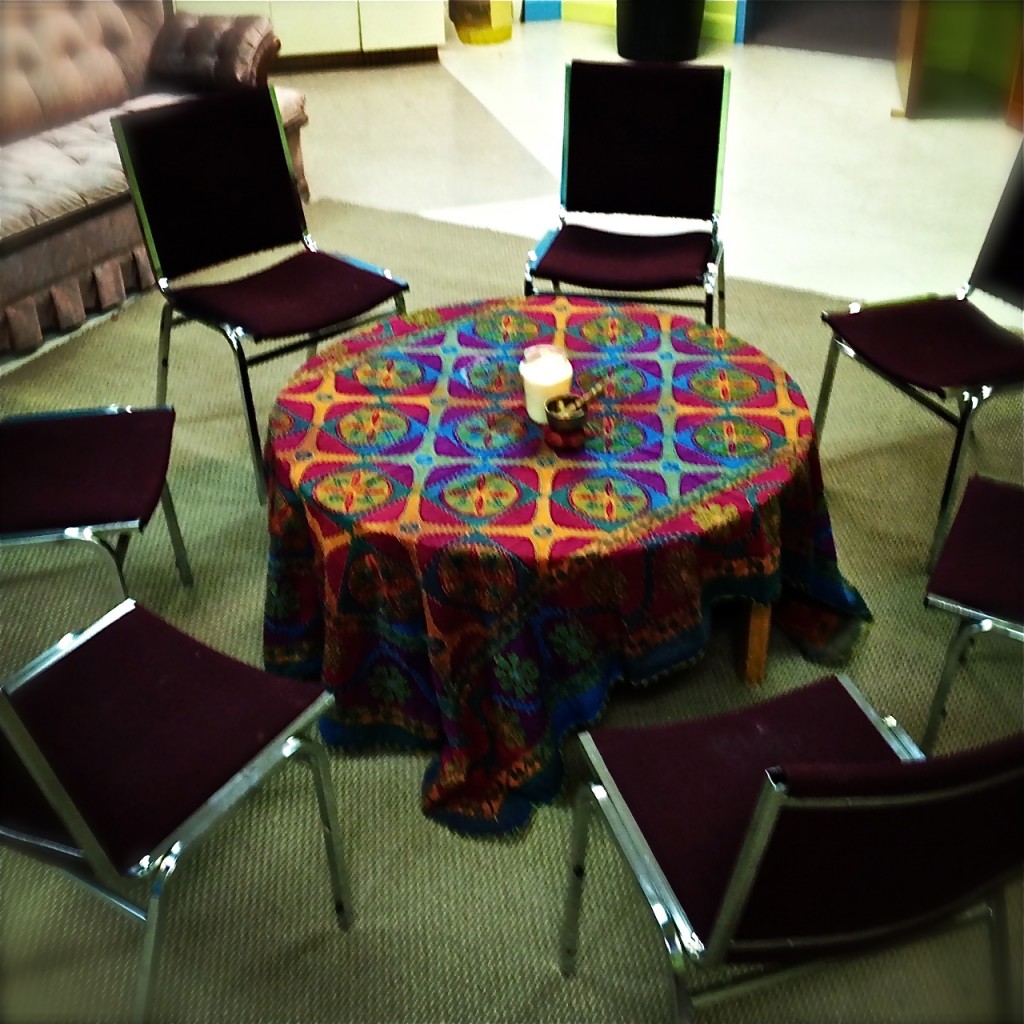
It’s another Tuesday night and I prepare once again for my small circle of writers. I arrive early and place the low round table in the centre, covered with the colourful tapestry that comes with me to every workshop. Like the threads of the tapestry, many stories will be woven together tonight.
At the centre of the table is always the candle – the warmth that holds us together. Next to it is my Tibetan singing bowl and whatever talking piece has been selected for this evening’s sharing time. Sometimes the participants bring talking pieces that are meaningful to them. Tonight one woman has brought a beautiful black polished stone, adorned with a dragonfly mosaic. “It represents transformation,” she says.
The women (and occasionally men) settle into their chairs and I welcome them with the ringing of the bell. We sit quietly, focusing on our breath as we wait for the end of the rich tone. After the bell, a centring piece is read – a poem by Mary Oliver or a blessing by John O’Donohue. Then the talking piece is passed, and we share the details of how our weeks have gone – from the mundane to the profound. None of this is about writing, but it’s important nonetheless. Our writing voices emerge out of our personal stories and we know that those stories will feel more safe in a circle of people we trust. Only three weeks in, and we are already bonded, sharing increasingly more vulnerable stories with each other.
Next they begin to share the pieces they’ve been working on throughout the week. “I didn’t have much time,” one apologizes, or “it’s not very polished,” says another, or “it’s nothing great,” says yet another, and yet each time they share, I marvel at how profound and beautiful their simple offerings are. This week, they’ve written a dialogue between the voices in their heads – the one that wants something new and the one that’s resisting. Their individuality and shy dreams shine through their pieces.
Tonight we are exploring what voice means – both our own voices and the voices of those people and creatures we want to bring into our writing. I pull out a set of cards depicting forest creatures – the Elementals designed by my intuitive friend Thomas – and they are invited to write in the voice of the creature they see on the cards they select.
As they write, I boil water for tea. Tea goes well with writing and storytelling. There is silence in the room, each person wandering away from the space for awhile, imagining themselves in the forest with a mesmerizing creature that has a message meant just for them.
They share their pieces, surprised by how much wisdom flows out of them. Before long, the conversation has veered far away from writing. We’re talking about our connections to the earth, our secret longings, our hidden shame, our deepest fears. I say very little and offer only little guideposts to help them know the conversation is good and true and heading in the direction it’s meant to head in. In this moment, I am not teacher but host. It is their wisdom that is emerging – their truth, their gifts. I am here simply to help them unleash it.
As I listen, I find myself grinning at the beauty of this circle and all of the others like this that I have had the pleasure of hosting. Each offering I make, the right people show up, the right voices emerge, and the right truth is spoken. Always, the people that are drawn to what I offer are open-hearted and open-minded. They come because they want to learn and grow. They come because they are beginning to find the courage to explore and share their own stories. I am always fascinated by how unique and wise each person is.
Often, early in our time together, there is resistance in one or two of them, but usually by the end, the resistance has softened and openness has taken its place. Only once has someone stopped coming because she wasn’t prepare to process the depth of feelings that surfaced for her in the circle.
The evening ends quickly and they are given their next assignment. This week, they will write about place. They’ll find a place that feels meaningful to them and they’ll find the unique quality and voice of that place. I have no doubt that once again they’ll be surprised at what shows up in their writing.
One more time, the talking piece is passed, and we share what we learned or what intentions we wish to set for the week ahead. The bell is wrung one more time, and we begin to leave the circle and depart for our various homes.
I drive home, taking the long way through the park, savouring the magic of the night. This is my greatest dream coming true, circle by circle, story by story. I am honoured and blessed to be the host of so much goodness.
by Heather Plett | Oct 12, 2012 | change, Labyrinth
It was remarkable how many people responded to my last post, through emails, comments, and Facebook posts. Repeatedly people said some version of: “YES! This is what I need too! I’ve been feeling so lost and your post felt like permission to tear up the maps and simply surrender to the path that lays itself out before me.”
It seems a lot of people need lack-of-vision boards instead of vision boards. It seems we all need to re-learn the importance of surrender.
In our goal-obsessed, vision-board-creating, be-busy-or-be-nothing, success-driven culture, we have forgotten something that’s really, really important.
There is great value in getting lost.
It’s true. We can’t go through the journey of life without letting ourselves get profoundly lost sometimes. The places where we get lost – where we surrender to the spiritual spirals that takes us into a deeper knowing, where we give up on the expected outcome and let something new emerge – those are the places in which we are transformed.
Yesterday, I curled up in bed next to my Mom and I wept over the way cancer is stealing her body and her energy. I wept for the things we can no longer do together. I wept for the future ahead that looks foreign and unfriendly. I wept for the great loss that the end of her life will bring. I wept because I felt utterly and completely lost.
Nobody gives you a roadmap for losing a parent. Nobody teaches you a course in how to watch cancer destroy someone you love. Nobody prepares you for a detour into the spiralling vortex of grief.
This one thought gave me some comfort me in my grief… I am SUPPOSED to feel lost. I’m supposed to feel like a ship that’s lost its anchor, tossed about on these unpredictable waves of longing and loss. I’m supposed to feel like the ground has been pulled out from underneath me and I am desperately clutching for something to keep me from falling.
This is all part of the process. This is all part of my journey.
Don’t get me wrong – just because I am deeply familiar with the chaos of grief, doesn’t make this easy. It’s excruciating and I’m fighting my way through waves of anger, heartache, and bitterness. “Must I go through this AGAIN?!” I shout to the heavens. “Isn’t it enough that Dad died in a ditch and it felt like that tractor had driven over my heart and not just his? Do you have to take Mom away too?”
I rant and I rave and I cry, but at least I give myself permission to be lost. At least I don’t have any unrealistic expectations of “closure” or “acceptance” or “5 steps through grief”.
Back in June, I took part in a change lab in which we walked through Theory U, a rich and meaningful process that helps groups (and individuals) move through change by letting go of the past, “presencing” what is to come, and then, with an open heart and open mind, letting the new thing come. It wasn’t ostensibly designed to teach us about grief, but grief is part of every change process and so the two are closely intertwined. To get through any transformational change, we need to let go and let come. Like walking the labyrinth, we need to release, receive, and return.
In this profound place of loss in which I find myself again, I’m taking another deep dive into the U curve, letting go of the past, accepting the chaos, being present in the loss. All the while, I am connecting to Source, opening my heart and opening my mind to the new future.
This will change me. I will shed a lot of tears and release a lot of anger. It will tear me apart and then rebuild me into something new. It will be a stronger version of myself. I know this to be true. I am stronger for the paths of grief I have walked down. I am wiser for the loss I have suffered. I am more compassionate because I have graves to visit. I can call myself a “guide on the path through chaos to creativity” because I am deeply familiar with chaos and loss.
Remember this… You have permission to be lost. You have permission to let go. You have permission to dive into the bottom of the U, not knowing what will emerge after the surrender. You have permission to cry and rant and rave. You have permission to tear up maps and destroy the pretence of paths. You have permission to not make any goals but instead to surrender to what comes.
Let go, and then let come. And in between, keep breathing.
 About a dozen years ago, when I was feeling rather lost in my leadership journey, I started looking for new leadership models and I came across the work of Christina Baldwin and her partner Ann Linnea. Christina and Ann’s primary work revolves around bringing circle back into the way we gather in our communities and workplaces. In that dark moment, it felt like they lit a candle for me, offering me hope of a better future. Since then, I’ve read almost everything Christina has written and I’ve had the privilege of participating in a story/circle workshop with her. I consider her to be one of my greatest teachers. I now use the PeerSpirit Circle Guidelines for almost every course, workshop, or conversation I facilitate. I highly recommend Christina and Ann’s book The Circle Way: A Leader in Every Chair.
About a dozen years ago, when I was feeling rather lost in my leadership journey, I started looking for new leadership models and I came across the work of Christina Baldwin and her partner Ann Linnea. Christina and Ann’s primary work revolves around bringing circle back into the way we gather in our communities and workplaces. In that dark moment, it felt like they lit a candle for me, offering me hope of a better future. Since then, I’ve read almost everything Christina has written and I’ve had the privilege of participating in a story/circle workshop with her. I consider her to be one of my greatest teachers. I now use the PeerSpirit Circle Guidelines for almost every course, workshop, or conversation I facilitate. I highly recommend Christina and Ann’s book The Circle Way: A Leader in Every Chair. Janell Kapoor likes to play with mud. With a passion for living in close connection with the earth, she teaches natural home building and is the founder of Kleiwerks International. She has traveled around the world, both as a student and teacher of natural home building techniques. Janell has a beautiful spirit that’s quickly evident when you have a chance to chat with her. One of the things I learned about her recently is that she loves to walk barefoot in the woods, which seems like a great way to get in touch with your wild heart!
Janell Kapoor likes to play with mud. With a passion for living in close connection with the earth, she teaches natural home building and is the founder of Kleiwerks International. She has traveled around the world, both as a student and teacher of natural home building techniques. Janell has a beautiful spirit that’s quickly evident when you have a chance to chat with her. One of the things I learned about her recently is that she loves to walk barefoot in the woods, which seems like a great way to get in touch with your wild heart! I became intrigued with Marianne Knuth’s story when I first read about it in Storycatcher (by Christina Baldwin). Not long after reading about her, I had the pleasure of meeting Marianne at ALIA, where she was one of the hosts. Marianne is the founder of Kufunda Learning Village in Zimbabwe, a place I long to visit some day. Kufunda seeks to create their own sustainable solutions in a country that has been wracked with financial crisis and conflict. Built on a unique model that encourages people to be self-reliant, community-oriented, and resilient, members of the village develop (and share) skills in permaculture, organic farming, making herbal remedies out of locally grown plants, eco-building, renewable energy, and community building.
I became intrigued with Marianne Knuth’s story when I first read about it in Storycatcher (by Christina Baldwin). Not long after reading about her, I had the pleasure of meeting Marianne at ALIA, where she was one of the hosts. Marianne is the founder of Kufunda Learning Village in Zimbabwe, a place I long to visit some day. Kufunda seeks to create their own sustainable solutions in a country that has been wracked with financial crisis and conflict. Built on a unique model that encourages people to be self-reliant, community-oriented, and resilient, members of the village develop (and share) skills in permaculture, organic farming, making herbal remedies out of locally grown plants, eco-building, renewable energy, and community building. Jodi Crane found her wild heart through play. She is a play therapist, a counseling professor, and a mom who loves to be creative. I love the fact that she has a long list of credentials (including a PhD in Counseling and Student Services) that would imply that she’s a serious scholar, and yet her greatest joy and the wisdom she shares most broadly with the world is the gift of play. If anyone knows the value of bringing more play into our journeys toward our own wild hearts, she does!
Jodi Crane found her wild heart through play. She is a play therapist, a counseling professor, and a mom who loves to be creative. I love the fact that she has a long list of credentials (including a PhD in Counseling and Student Services) that would imply that she’s a serious scholar, and yet her greatest joy and the wisdom she shares most broadly with the world is the gift of play. If anyone knows the value of bringing more play into our journeys toward our own wild hearts, she does! The first thing that happens when you get a chance to talk to Julie Daley is that you get lost in her deep, wise, and soulful eyes. In her presence, I feel instantly safe and seen. She is an open-hearted and wise healer, catalyst, dancer, and writer. She writes beautifully at Unabashedly Female, she teaches creativity and leadership at Stanford University, and she offers coaching and courses that help guide women into their own internal landscape, a land where the sacred feminine makes herself known in Her own way.
The first thing that happens when you get a chance to talk to Julie Daley is that you get lost in her deep, wise, and soulful eyes. In her presence, I feel instantly safe and seen. She is an open-hearted and wise healer, catalyst, dancer, and writer. She writes beautifully at Unabashedly Female, she teaches creativity and leadership at Stanford University, and she offers coaching and courses that help guide women into their own internal landscape, a land where the sacred feminine makes herself known in Her own way. I first met Michael Jones when we were both participants in a leadership intensive at ALIA Summer Institute. He didn’t speak often in the workshop, but when he did, his words were rich with wisdom. One evening, he delivered the keynote address and played the piano. Even on stage, his words were few and measured (and interspersed with some of the most gorgeous music I’d ever heard), but WOW did they pack a punch! He spoke about the power of place, and then he demonstrated by playing music that had evolved out of certain places that were meaningful to him. The next day, I rushed to the bookstore to buy his book Artful Leadership and his cd Almost Home. I devoured his book as soon as I got home and listened to his cd non-stop for weeks. My view of leadership was transformed. More than anything, he gave me permission to believe what I had always wanted to believe, that “in a time of vast mistrust we need leaders who are candid and truthful, willing to be present to their vulnerabilities, fears, and concerns, and able to articulate them as openly and thoughtfully as their aspirations, dreams, and ideas for change.”
I first met Michael Jones when we were both participants in a leadership intensive at ALIA Summer Institute. He didn’t speak often in the workshop, but when he did, his words were rich with wisdom. One evening, he delivered the keynote address and played the piano. Even on stage, his words were few and measured (and interspersed with some of the most gorgeous music I’d ever heard), but WOW did they pack a punch! He spoke about the power of place, and then he demonstrated by playing music that had evolved out of certain places that were meaningful to him. The next day, I rushed to the bookstore to buy his book Artful Leadership and his cd Almost Home. I devoured his book as soon as I got home and listened to his cd non-stop for weeks. My view of leadership was transformed. More than anything, he gave me permission to believe what I had always wanted to believe, that “in a time of vast mistrust we need leaders who are candid and truthful, willing to be present to their vulnerabilities, fears, and concerns, and able to articulate them as openly and thoughtfully as their aspirations, dreams, and ideas for change.” Three years ago, I encountered Christine Claire Reed online and knew almost instantly that we were kindred spirits. At the time, she was just beginning to rediscover her love of dance. Having dealt with years of rather debilitating depression, her journey in recent years has taken her to a place of healing and wild-hearted wholeness through dance. After immersing herself in various forms of yoga dance, healing dance, and elder dance, she took a courageous step and opened the Girl on Fire Movement Studio a year ago. She now teaches women to get back into their bodies to find healing and hope.
Three years ago, I encountered Christine Claire Reed online and knew almost instantly that we were kindred spirits. At the time, she was just beginning to rediscover her love of dance. Having dealt with years of rather debilitating depression, her journey in recent years has taken her to a place of healing and wild-hearted wholeness through dance. After immersing herself in various forms of yoga dance, healing dance, and elder dance, she took a courageous step and opened the Girl on Fire Movement Studio a year ago. She now teaches women to get back into their bodies to find healing and hope. The first thing that comes to mind when I think of Filiz Telek is the term “imaginal cell”. Like the cells in a chrysalis that hold the hope of the future, she senses the beauty of the butterfly world emerging. She has spent the last couple of years living in the gift economy and traveling to places where she sees the Brave New World emerging. Her role in life is to serve as a storyteller, filmmaker, and edgewalker, showing us glimpses into the future that help propel us forward with hope. I don’t think I could improve upon the way she describes herself: “Wild at heart, free in Spirit, curious in mind, I am a nomadic artist, world traveler, spiritual seeker, a process host, a social innovator, an Earth activist, a community organizer whose purpose is to serve the evolution of human consciousness and awakening a sense of possibility and sacred in human heart & spirit.”
The first thing that comes to mind when I think of Filiz Telek is the term “imaginal cell”. Like the cells in a chrysalis that hold the hope of the future, she senses the beauty of the butterfly world emerging. She has spent the last couple of years living in the gift economy and traveling to places where she sees the Brave New World emerging. Her role in life is to serve as a storyteller, filmmaker, and edgewalker, showing us glimpses into the future that help propel us forward with hope. I don’t think I could improve upon the way she describes herself: “Wild at heart, free in Spirit, curious in mind, I am a nomadic artist, world traveler, spiritual seeker, a process host, a social innovator, an Earth activist, a community organizer whose purpose is to serve the evolution of human consciousness and awakening a sense of possibility and sacred in human heart & spirit.” I was intrigued with Ronna Detrick from the first time I discovered her blog. She specializes in seeing the wisdom stories about women in the Bible through fresh (and often controversial) eyes. It was this freshness that really resonated for me, and I kept going back for more. Since then I have had the privilege of having many Skype conversations with Ronna and have benefited from her wisdom, her doubt, her questions, and her big open heart. She is a truth-teller who boldly takes the women she teaches and coaches into deeper understanding of themselves and their faith.
I was intrigued with Ronna Detrick from the first time I discovered her blog. She specializes in seeing the wisdom stories about women in the Bible through fresh (and often controversial) eyes. It was this freshness that really resonated for me, and I kept going back for more. Since then I have had the privilege of having many Skype conversations with Ronna and have benefited from her wisdom, her doubt, her questions, and her big open heart. She is a truth-teller who boldly takes the women she teaches and coaches into deeper understanding of themselves and their faith. The first time I heard Peter Block speak at ALIA in Columbus, Ohio, I spent most of the time scribbling in my notebook because I didn’t want to forget even one tiny bit of the wisdom that flowed from his mouth. His words resonated in such a deep way that I felt like I had come home. One of the first things I remember him saying was “when we gather like this, with you sitting in rows of chairs and me standing at the front teaching you, we are accepting the patriarchal view of the world, where one has the power and wisdom and the others have to sit in subservient positions receiving it.” He went on to talk about how badly we need to move back into community, based on feminine wisdom and the shared leadership of a circle. After his talk, I approached him and said “as a woman who deeply believes what you’re talking about, I would love it if you would write a book about the rise of feminine wisdom. You have a lot of influence and I think more people need to hear about this.” He laughed and said “that’s not my job. It’s yours. You write the book and I’ll support you.” Well, I haven’t written the book, but in teaching this course, I’m taking a step in that direction, and I’m pleased to say that he’s living up to his commitment to supporting me. Peter is the author of several books, including Community, The Abundant Community, The Answer to How is Yes, and Stewardship.
The first time I heard Peter Block speak at ALIA in Columbus, Ohio, I spent most of the time scribbling in my notebook because I didn’t want to forget even one tiny bit of the wisdom that flowed from his mouth. His words resonated in such a deep way that I felt like I had come home. One of the first things I remember him saying was “when we gather like this, with you sitting in rows of chairs and me standing at the front teaching you, we are accepting the patriarchal view of the world, where one has the power and wisdom and the others have to sit in subservient positions receiving it.” He went on to talk about how badly we need to move back into community, based on feminine wisdom and the shared leadership of a circle. After his talk, I approached him and said “as a woman who deeply believes what you’re talking about, I would love it if you would write a book about the rise of feminine wisdom. You have a lot of influence and I think more people need to hear about this.” He laughed and said “that’s not my job. It’s yours. You write the book and I’ll support you.” Well, I haven’t written the book, but in teaching this course, I’m taking a step in that direction, and I’m pleased to say that he’s living up to his commitment to supporting me. Peter is the author of several books, including Community, The Abundant Community, The Answer to How is Yes, and Stewardship.  Some day I want to meet Gail Larsen to learn from her and to thank her for the wisdom she has shared with the world. I have been aware of her teachings for awhile, but really immersed myself in them last year when I listened to an audio version of her book Transformational Speaking on a long drive across the prairies. Transformational Speaking is a process that reveals the part of you that is fully capable – right now – of opening hearts, inspiring change, and moving others to act through public speaking. It’s about finding your “original medicine” and speaking from your wild heart. I’m exited about my first (and hopefully not my last) opportunity to speak with Gail!
Some day I want to meet Gail Larsen to learn from her and to thank her for the wisdom she has shared with the world. I have been aware of her teachings for awhile, but really immersed myself in them last year when I listened to an audio version of her book Transformational Speaking on a long drive across the prairies. Transformational Speaking is a process that reveals the part of you that is fully capable – right now – of opening hearts, inspiring change, and moving others to act through public speaking. It’s about finding your “original medicine” and speaking from your wild heart. I’m exited about my first (and hopefully not my last) opportunity to speak with Gail! I think the first thing that created a bond between Lianne Raymond and me were our stories of similar childhoods growing up in the prairies. It didn’t take long to discover that the things we had in common went much deeper than that. Lianne is a gifted teacher and coach, and I think that her greatest gift is her ability to reach right to the heart of a matter before most people have even begun to scratch the surface. She serves as my wisdom-source whenever I have questions about Jungian psychology or Marion Woodman teachings. Through her coaching and teaching, she helps people to live and love with wild abandon.
I think the first thing that created a bond between Lianne Raymond and me were our stories of similar childhoods growing up in the prairies. It didn’t take long to discover that the things we had in common went much deeper than that. Lianne is a gifted teacher and coach, and I think that her greatest gift is her ability to reach right to the heart of a matter before most people have even begun to scratch the surface. She serves as my wisdom-source whenever I have questions about Jungian psychology or Marion Woodman teachings. Through her coaching and teaching, she helps people to live and love with wild abandon. Soon after Connie Hozvicka and I met online, we began to discover remarkable synchronicity. We would often find ourselves going through similar experiences or having the same thought processes in reaction to what we witnessed. At the beginning of our friendship, Connie and I were both stuck in jobs that no longer made us happy. Within months of each other, we each took bold and scary steps into self-employment. Connie now runs Dirty Footprints Studio where she awakens fearless creativity in others, inspires each soul to radiate their heart’s unique expression, and guides individuals to ruthlessly trust their innate wisdom. I’ve had the pleasure of participating in one of Connie’s live workshops, and I can tell you that she teaches with a wild-hearted passion and authenticity.
Soon after Connie Hozvicka and I met online, we began to discover remarkable synchronicity. We would often find ourselves going through similar experiences or having the same thought processes in reaction to what we witnessed. At the beginning of our friendship, Connie and I were both stuck in jobs that no longer made us happy. Within months of each other, we each took bold and scary steps into self-employment. Connie now runs Dirty Footprints Studio where she awakens fearless creativity in others, inspires each soul to radiate their heart’s unique expression, and guides individuals to ruthlessly trust their innate wisdom. I’ve had the pleasure of participating in one of Connie’s live workshops, and I can tell you that she teaches with a wild-hearted passion and authenticity. I first encountered Deborah Frieze when I read the book she co-wrote with Meg Wheatley called Walk Out Walk On. Not long afterward, I had the pleasure of participating in a leadership intensive workshop that Deborah was teaching at ALIA. The workshop was based on five of the stories that are shared in the book, of communities from around the world that have walked out of unsolveable problems and destructive individualism and walked on to create the world they wished for. It was one of the most inspirational workshops I’d even attended, and I now refer to the book often in my own teaching. Deborah walked out of her own career as an executive in the high-tech industry, following her wild heart into work that sustained and energized her, supporting friends and colleagues around the world who are creating healthy and resilient communities.
I first encountered Deborah Frieze when I read the book she co-wrote with Meg Wheatley called Walk Out Walk On. Not long afterward, I had the pleasure of participating in a leadership intensive workshop that Deborah was teaching at ALIA. The workshop was based on five of the stories that are shared in the book, of communities from around the world that have walked out of unsolveable problems and destructive individualism and walked on to create the world they wished for. It was one of the most inspirational workshops I’d even attended, and I now refer to the book often in my own teaching. Deborah walked out of her own career as an executive in the high-tech industry, following her wild heart into work that sustained and energized her, supporting friends and colleagues around the world who are creating healthy and resilient communities. Chris Zydel is the Wild Heart Queen herself and I am tickled pink that she will be part of this program. Few people model wild-hearted living as much as Chris does, and I am delighted to have her as a friend and mentor. For more than thirty years, she’s been serving as a creativity mentor for women (and a few men), first as a psychotherapist, and now as a teacher (and writer) of Creative Juices Arts. Though I haven’t yet been to one of her retreats, I can tell by the photos and videos that they are juicy, deep, soulful, and wild-hearted. At her retreats (and teacher training) she teaches people to paint from their wild hearts in an environment of encouragement that awakens their artist’s souls and challenges them to become spiritual adventurers journeying to their own creative source.
Chris Zydel is the Wild Heart Queen herself and I am tickled pink that she will be part of this program. Few people model wild-hearted living as much as Chris does, and I am delighted to have her as a friend and mentor. For more than thirty years, she’s been serving as a creativity mentor for women (and a few men), first as a psychotherapist, and now as a teacher (and writer) of Creative Juices Arts. Though I haven’t yet been to one of her retreats, I can tell by the photos and videos that they are juicy, deep, soulful, and wild-hearted. At her retreats (and teacher training) she teaches people to paint from their wild hearts in an environment of encouragement that awakens their artist’s souls and challenges them to become spiritual adventurers journeying to their own creative source. It wasn’t long after Desiree Adaway and I met on Twitter that we started to joke that we’d been separated at birth. (Don’t let the colour of our skin fool you!) In many ways, we could be twins – she just came out of the womb a few months earlier than me. We have similar world views, we’re both raising daughters, we’re both passionate about social justice, we both spent many years of our careers in leadership in international development, and we’ve both been to some of the poorest parts of the world. From the start, when we were both on the verge of walking away from the non-profits we were working for, Desiree and I have served as a mutual support system for each other – sometimes she does the crying and sometimes I do. Though we’re similar, we also balance each other off. When I get a little lost in my untamed creativity, she keeps my feet on the ground. When she overworks herself or gets stuck in left brain patterns, I send her to the store for coloured markers and tell her to start playing. Desiree serves as a consultant and coach to organizations that are dreaming of a better world. She’s fierce, bold, wild-hearted, and full of wisdom.
It wasn’t long after Desiree Adaway and I met on Twitter that we started to joke that we’d been separated at birth. (Don’t let the colour of our skin fool you!) In many ways, we could be twins – she just came out of the womb a few months earlier than me. We have similar world views, we’re both raising daughters, we’re both passionate about social justice, we both spent many years of our careers in leadership in international development, and we’ve both been to some of the poorest parts of the world. From the start, when we were both on the verge of walking away from the non-profits we were working for, Desiree and I have served as a mutual support system for each other – sometimes she does the crying and sometimes I do. Though we’re similar, we also balance each other off. When I get a little lost in my untamed creativity, she keeps my feet on the ground. When she overworks herself or gets stuck in left brain patterns, I send her to the store for coloured markers and tell her to start playing. Desiree serves as a consultant and coach to organizations that are dreaming of a better world. She’s fierce, bold, wild-hearted, and full of wisdom. The first thing that drew me to Hali Karla was her prayer paintings. In one of the first posts I saw, she was inviting people to send her prayers which she then printed and embedded into a painting. I was struck by this beautiful offering for the way it took prayer to a creative and community-oriented place. Since then, Hali invited me to share my story in her series about artist healers. I love the wild-hearted way Hali describes herself: paint-slinging word-wrangling artist, dreamer, visionary, life-loving learner, seer, seeker, wise woman in training, explorer, nature’s child, light and vessel, believer, taste-tester, shape-shifter, sundancing moonspirit Source devotee, play-in-progress, music-maker, booty-shaker, space holder, environmental sponge, witness to Healing, cheerleader for consciousness expansion, just another Being looking for a little peace of mind, and ultimately just an Acolyte to the Muse…
The first thing that drew me to Hali Karla was her prayer paintings. In one of the first posts I saw, she was inviting people to send her prayers which she then printed and embedded into a painting. I was struck by this beautiful offering for the way it took prayer to a creative and community-oriented place. Since then, Hali invited me to share my story in her series about artist healers. I love the wild-hearted way Hali describes herself: paint-slinging word-wrangling artist, dreamer, visionary, life-loving learner, seer, seeker, wise woman in training, explorer, nature’s child, light and vessel, believer, taste-tester, shape-shifter, sundancing moonspirit Source devotee, play-in-progress, music-maker, booty-shaker, space holder, environmental sponge, witness to Healing, cheerleader for consciousness expansion, just another Being looking for a little peace of mind, and ultimately just an Acolyte to the Muse… Cath Duncan has a deep and wise heart and I knew I had found a place of safety with her from the first time I encountered her. What first bonded Cath and I was our shared stories of baby-loss. When she lost little Juggernaut, I shared with her my own story of losing Matthew and then discovering, in the 12 years since, how much he still has to teach me. When Cath decided to honour Juggernaut by walking 100 kilometres for the Kidney March, I knew I wanted to walk with her. Together we went through three days of excruciating pain and exhaustion, and that created a bond between us that has grown since. Cath now serves as a grief coach and has co-created a Creative Grief Coaching certification program for people who want to explore the emerging field of grief and creativity.
Cath Duncan has a deep and wise heart and I knew I had found a place of safety with her from the first time I encountered her. What first bonded Cath and I was our shared stories of baby-loss. When she lost little Juggernaut, I shared with her my own story of losing Matthew and then discovering, in the 12 years since, how much he still has to teach me. When Cath decided to honour Juggernaut by walking 100 kilometres for the Kidney March, I knew I wanted to walk with her. Together we went through three days of excruciating pain and exhaustion, and that created a bond between us that has grown since. Cath now serves as a grief coach and has co-created a Creative Grief Coaching certification program for people who want to explore the emerging field of grief and creativity. Thomas Arthur is one of the most unique and intuitive people I’ve ever met. He is part juggler, part artist, part shaman, part poet, and part naturalist. I first encountered him at ALIA where he presented a performance that was a combination of juggling, dancing, and earth-wisdom-sharing. Thomas is the enchanted host of Earthanima where he invites people to listen to the wisdom the animate energies living within our planetary nature. Through performance, short films, digital images, conversations and workshops Earthanima unfolds an expression of wonder and delight integrating the natural wisdom of this living planet with the compassionate heart of our human intelligence. I often use the Elementals, a set of imaginative creatures Thomas has found in nature, to inspire the writers of my Creative Writing for Self-Discovery class.
Thomas Arthur is one of the most unique and intuitive people I’ve ever met. He is part juggler, part artist, part shaman, part poet, and part naturalist. I first encountered him at ALIA where he presented a performance that was a combination of juggling, dancing, and earth-wisdom-sharing. Thomas is the enchanted host of Earthanima where he invites people to listen to the wisdom the animate energies living within our planetary nature. Through performance, short films, digital images, conversations and workshops Earthanima unfolds an expression of wonder and delight integrating the natural wisdom of this living planet with the compassionate heart of our human intelligence. I often use the Elementals, a set of imaginative creatures Thomas has found in nature, to inspire the writers of my Creative Writing for Self-Discovery class. Michele Lisenbury Christensen has started a Hot Love Revolution. It doesn’t take long after you encounter her that you know she knows a lot about love. Love shines out of her eyes. She says she’s on a mission to help happy, well-loved women save the world. Sounds pretty wild-hearted to me! The core of her coaching work is what she calls “sacred ambition” – the way our aims in the world can stoke the fires of our spiritual development – and vice versa. My first encounter with Michele was when I took part in the first offering of Teach Now, an online course she teaches along with Jen Louden. It was one of the best courses I’ve ever taken and it changed the way I teach.
Michele Lisenbury Christensen has started a Hot Love Revolution. It doesn’t take long after you encounter her that you know she knows a lot about love. Love shines out of her eyes. She says she’s on a mission to help happy, well-loved women save the world. Sounds pretty wild-hearted to me! The core of her coaching work is what she calls “sacred ambition” – the way our aims in the world can stoke the fires of our spiritual development – and vice versa. My first encounter with Michele was when I took part in the first offering of Teach Now, an online course she teaches along with Jen Louden. It was one of the best courses I’ve ever taken and it changed the way I teach. The first thing that comes to mind when I think of Hiro Boga is the word kindness. She exudes it. Every encounter I’ve ever had with her has been one of genuine, openhearted kindness. She believes that each and every one of us is a sacred gift and that our presence is vital to the wellbeing and evolution of our world. She works with passionate people who are working to create the lives and businesses they truly desire. All of her work is anchored in a very simple, grounded premise: organic business growth flows from deep inner growth and harmony.
The first thing that comes to mind when I think of Hiro Boga is the word kindness. She exudes it. Every encounter I’ve ever had with her has been one of genuine, openhearted kindness. She believes that each and every one of us is a sacred gift and that our presence is vital to the wellbeing and evolution of our world. She works with passionate people who are working to create the lives and businesses they truly desire. All of her work is anchored in a very simple, grounded premise: organic business growth flows from deep inner growth and harmony. I can’t remember when I first encountered Lisa Wilson online, but I believe it was her beautiful, gracious smile that drew me in. The story I read on her face was one of depth and wisdom. Though there’s a lightness and sense of fun about her, she has been through great pain and struggle and so she serves as a light-bearer. Lisa is passionate about passionate living. She is an awareness artist who wants to encourage people to create wildly, to pursue their passions with fervent focus, and to mindfully go where they have not gone before (but she doesn’t want them to forget about the dirty dishes). Through Lifeunity, she offers insights and invitations of how to practice being mindful, compassionate, and present for your mundane matters.
I can’t remember when I first encountered Lisa Wilson online, but I believe it was her beautiful, gracious smile that drew me in. The story I read on her face was one of depth and wisdom. Though there’s a lightness and sense of fun about her, she has been through great pain and struggle and so she serves as a light-bearer. Lisa is passionate about passionate living. She is an awareness artist who wants to encourage people to create wildly, to pursue their passions with fervent focus, and to mindfully go where they have not gone before (but she doesn’t want them to forget about the dirty dishes). Through Lifeunity, she offers insights and invitations of how to practice being mindful, compassionate, and present for your mundane matters. Jen Louden is exuberant, generous, and wild-hearted. She’s got a long list of accomplishments (including six published books that sold in the millions, and an appearance on Oprah), and yet she is one of the most approachable people I know. I’ve had the pleasure of chatting with her several times, and I’ve learned a lot from her, especially through Teach Now, an online program for teachers who want to “love the world into wholeness”. Her books are all about how to create a life of wholeness, based on self-kindness and self-acceptance. She leads retreats, coaches, and encourages women to Savor and Serve.
Jen Louden is exuberant, generous, and wild-hearted. She’s got a long list of accomplishments (including six published books that sold in the millions, and an appearance on Oprah), and yet she is one of the most approachable people I know. I’ve had the pleasure of chatting with her several times, and I’ve learned a lot from her, especially through Teach Now, an online program for teachers who want to “love the world into wholeness”. Her books are all about how to create a life of wholeness, based on self-kindness and self-acceptance. She leads retreats, coaches, and encourages women to Savor and Serve. I fell in love with Ann-Marie Boudreau this past summer at the women’s gathering that I co-hosted in Peterborough, Ontario. The first things you notice about Ann-Marie are her twinkling eyes and her beautiful, resonant voice. At the gathering, Ann-Marie led us in all kinds of playful music-making and movement, and each time she did, she’d pull out another intriguing instrument none of us had ever seen before. Ann-Marie is a sound practitioner and psychotherapist. Her mission is working with communities and individuals to enable them on their personal journeys toward self-realization and fulfillment. As a multi-instrumentalist and improvisational vocalist she is adept at performing on a wide range of instruments, the sitar and harp being unique to her repertoire. She facilitates a wide variety of sound-related, interactive and experiential workshops that invite the inner child out to play.
I fell in love with Ann-Marie Boudreau this past summer at the women’s gathering that I co-hosted in Peterborough, Ontario. The first things you notice about Ann-Marie are her twinkling eyes and her beautiful, resonant voice. At the gathering, Ann-Marie led us in all kinds of playful music-making and movement, and each time she did, she’d pull out another intriguing instrument none of us had ever seen before. Ann-Marie is a sound practitioner and psychotherapist. Her mission is working with communities and individuals to enable them on their personal journeys toward self-realization and fulfillment. As a multi-instrumentalist and improvisational vocalist she is adept at performing on a wide range of instruments, the sitar and harp being unique to her repertoire. She facilitates a wide variety of sound-related, interactive and experiential workshops that invite the inner child out to play. The first thing that intrigued me about Kate Swoboda was the fact that she refers to herself as Kate Courageous online. I am found of courageous women, and so I was pretty sure I’d like her. I was right. Kate runs a site called Your Courageous Life. Practicing courage is her expertise. Teaching others how to powerfully work with fear is her vocation. She stands for righteous integrity and ferocious love, all in service to living life on your own terms and being a force for good. She doesn’t believe in “kicking fear to the curb” and speaks instead about embracing our fear and stepping forward in courage.
The first thing that intrigued me about Kate Swoboda was the fact that she refers to herself as Kate Courageous online. I am found of courageous women, and so I was pretty sure I’d like her. I was right. Kate runs a site called Your Courageous Life. Practicing courage is her expertise. Teaching others how to powerfully work with fear is her vocation. She stands for righteous integrity and ferocious love, all in service to living life on your own terms and being a force for good. She doesn’t believe in “kicking fear to the curb” and speaks instead about embracing our fear and stepping forward in courage. Two and a half years ago, Kathy Jourdain and I learned how to be Shambala warriors together in a leadership intensive taught by Meg Wheatley, Jim Gimian, and Jerry Granelli. We faced our fears and by the end of the weak we’d formed a blues band together and each person in the group had written a blues song. Since then, I’ve had the pleasure of serving as a story coach for her as she wrote her memoir about the shifting shape in her life after she found out her identity was not what she’d always believed it to be. I’ve witnessed Kathy’s amazing growth in the past few years as she’s followed her wild heart into writing, teaching, and hosting conversations. She is actively involved in the Art of Hosting community and she travels the world teaching people how to host meaningful conversations. Kathy’s passion is co-creative, collaborative leadership born out of what more is possible in teams, organizations and communities when people are also engaged in self leadership journeys.
Two and a half years ago, Kathy Jourdain and I learned how to be Shambala warriors together in a leadership intensive taught by Meg Wheatley, Jim Gimian, and Jerry Granelli. We faced our fears and by the end of the weak we’d formed a blues band together and each person in the group had written a blues song. Since then, I’ve had the pleasure of serving as a story coach for her as she wrote her memoir about the shifting shape in her life after she found out her identity was not what she’d always believed it to be. I’ve witnessed Kathy’s amazing growth in the past few years as she’s followed her wild heart into writing, teaching, and hosting conversations. She is actively involved in the Art of Hosting community and she travels the world teaching people how to host meaningful conversations. Kathy’s passion is co-creative, collaborative leadership born out of what more is possible in teams, organizations and communities when people are also engaged in self leadership journeys. I think Rachelle Mee-Chapman’s blog was one of the first ones I read on a regular basis. She wrote candidly about her own personal journey toward the kind of spirituality and community that her heart most longed for, and I found myself drawn in to this story. Since those early days of blogging, she went on to launch Magpie Girl, where she serves as a guide for people who are searching for their right-fit spirituality and who value art as a spiritual practice. After getting a master’s degree in theology and spending fifteen years as an ordained minister, she said goodbye to ordained ministry. She now calls herself “relig-ish” and teaches that we each can create our own theology and build a spirituality that fits. She is a misfit, a heretic, a rabble-rouser, AND a person of faith.
I think Rachelle Mee-Chapman’s blog was one of the first ones I read on a regular basis. She wrote candidly about her own personal journey toward the kind of spirituality and community that her heart most longed for, and I found myself drawn in to this story. Since those early days of blogging, she went on to launch Magpie Girl, where she serves as a guide for people who are searching for their right-fit spirituality and who value art as a spiritual practice. After getting a master’s degree in theology and spending fifteen years as an ordained minister, she said goodbye to ordained ministry. She now calls herself “relig-ish” and teaches that we each can create our own theology and build a spirituality that fits. She is a misfit, a heretic, a rabble-rouser, AND a person of faith.

